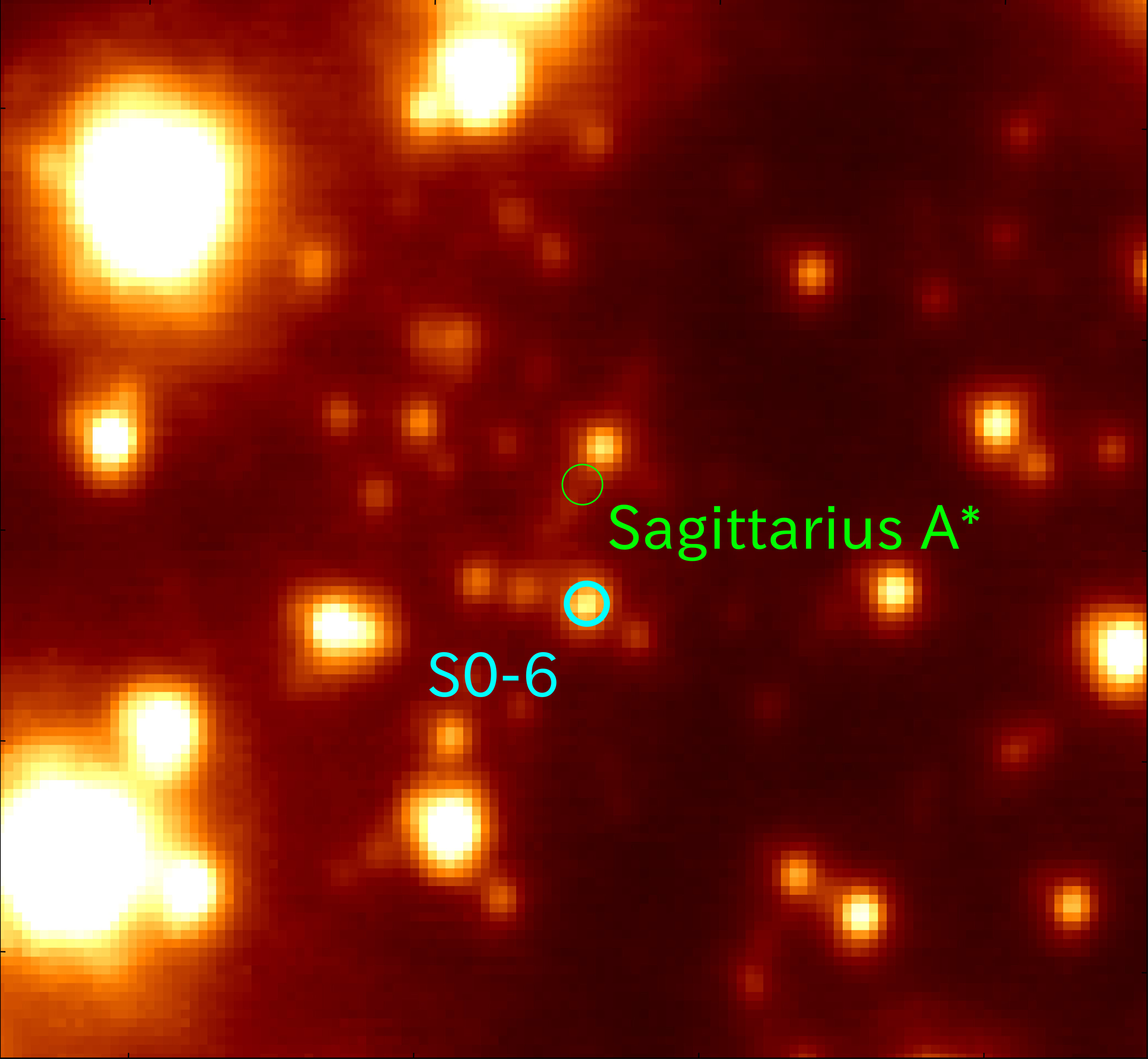A star near the supermassive black hole at the center of the Milky Way galaxy originated outside the galaxy according to a new study published in Proceedings of the Japan Academy, Series B. This is the first time a star of extragalactic origin has been found in the vicinity of the supermassive black hole.
Many stars are observed near the supermassive black hole known as Sagittarius A* at the center of our galaxy. But the black hole’s intense gravity makes the surrounding environment too harsh for stars to form near the black hole. All the observed stars must have formed somewhere else and migrated toward the black hole. This raises the question, Where did the stars form?
Research by an international team led by Shogo Nishiyama at Miyagi University of Education indicates that some of the stars may have come from farther away than previously thought, from completely outside of the Milky Way. The team used the Subaru Telescope over the course of eight years to observe the star S0-6 located only 0.04 light-years away from Sagittarius A*.
They determined that S0-6 is about 10 billion years old and has a chemical composition similar to stars found in small galaxies outside the Milky Way, such as the Small Magellanic Cloud and the Sagittarius dwarf galaxy.
The most likely theory to explain the composition of S0-6 is that it was born in a now extinct small galaxy orbiting the Milky Way that was absorbed. This is the first observational evidence suggesting that some of the stars in the vicinity of Sagittaius A* formed outside of the galaxy.
Over its 10 billion year life, S0-6 must have traveled more than 50,000 light-years from outside of the Milky Way to reach the vicinity of Sagittarius A*. Almost certainly S0-6 traveled much more than 50,000 light-years, slowly spiraling down to the center rather than making a straight shot.
There are still many questions according to Nishiyama, “Did S0-6 really originate outside the Milky Way galaxy? Does it have any companions, or did it travel alone? With further investigation, we hope to unravel the mysteries of stars near the supermassive black hole.”
More information:
Shogo Nishiyama et al, Origin of an orbiting star around the galactic supermassive black hole, Proceedings of the Japan Academy, Series B (2023). DOI: 10.2183/pjab.100.007
Citation:
A 10-billion-year, 50,000-light-year journey to a black hole (2023, December 4)
retrieved 4 December 2023
from https://phys.org/news/2023-12-billion-year-light-year-journey-black-hole.html
This document is subject to copyright. Apart from any fair dealing for the purpose of private study or research, no
part may be reproduced without the written permission. The content is provided for information purposes only.

Dr. Thomas Hughes is a UK-based scientist and science communicator who makes complex topics accessible to readers. His articles explore breakthroughs in various scientific disciplines, from space exploration to cutting-edge research.








